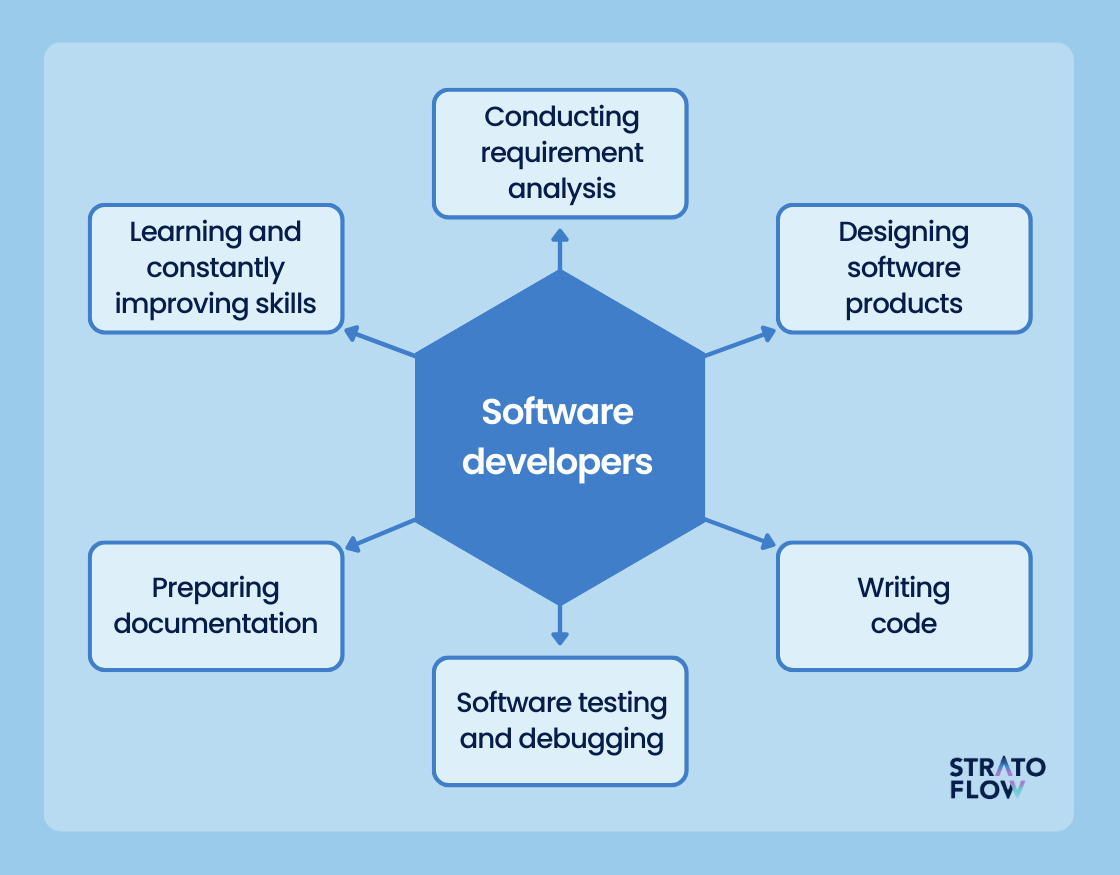Optimize Your Resources with Specialist Software Engineering Staffing Solutions
Wiki Article
Committed Developers vs. In-House Teams: Which Is Right for You?
The choice between utilizing dedicated designers and preserving an internal group is a significant one that can affect the trajectory of your tasks and general business approach. Alternatively, internal groups contribute to a cohesive business culture and a nuanced understanding of long-term goals.Understanding Dedicated Developers
The growing demand for specialized abilities in the tech market has actually brought about the introduction of devoted developers as a sensible option for numerous companies. These professionals are usually acquired on a job basis, enabling business to take advantage of details proficiency without the long-lasting dedication connected with permanent hires. Dedicated designers are typically ingrained within a customer's group, supplying versatility and scalability to satisfy task demands.This model enables organizations to access a worldwide talent pool, which is especially beneficial in a swiftly evolving technological landscape. Committed programmers can be sourced from numerous geographical places, guaranteeing that companies can locate the best capability at competitive rates. They usually bring a wealth of experience and expertise, having serviced varied jobs across different industries.
Furthermore, committed programmers can focus exclusively on the tasks handy, enhancing performance and performance. They are outfitted to incorporate effortlessly into existing operations, working together very closely with in-house groups to attain task goals. This technique not only lowers the worry of employment and training but also allows organizations to stay nimble, adjusting rapidly to altering market needs and technological improvements.
Advantages of In-House Teams

Furthermore, internal teams often tend to have a much deeper understanding of the firm's goal, worths, and goals. This positioning can enhance worker interaction and inspiration, as group members feel a lot more connected to their job and the company's success. In addition, having a specialized in-house group enables much better positioning of objectives and approaches, as these participants are continually focused on the firm's top priorities.
Internal teams additionally assist in quicker decision-making procedures, as they can react much more rapidly to difficulties and modifications. The well established connections and familiarity with business protocols enable streamlined operations and reduced miscommunication. Eventually, the mix of a cohesive culture, positioning with organizational objectives, and reliable communication makes in-house groups a beneficial possession for numerous companies, specifically those wanting to grow lasting growth and development.
Expense Considerations
When reviewing cost factors to consider, both specialized programmers and internal groups present distinct financial ramifications for organizations. Engaging committed developers usually includes a pay-per-project or hourly rate version, which can be cost-effective for businesses with fluctuating task demands. This approach permits flexibility in scaling resources up or down, making certain that companies only spend for the services they need.On the other hand, in-house groups involve repaired costs, consisting of wages, benefits, and overhead expenses such as office space and tools. While this design uses better control and prompt accessibility of sources, it may cause greater lasting expenditures, especially if the workload does not validate a full-time team.
Moreover, firms ought to consider the surprise expenses connected with recruitment and training of in-house staff members, which can better strain budget plans. Sometimes, the moment and sources invested in taking care of an internal group can diminish the organization's core business purposes.

Project Administration and Versatility
Project administration and adaptability are crucial variables that affect the option between in-house teams and committed designers. Devoted groups often have actually established procedures for handling jobs effectively, leveraging specific approaches like Agile or Scrum, which assist in iterative development and flexibility.
Ultimately, the choice between specialized developers and in-house teams hinges on the desired degree of versatility and the particular job administration demands. Business must assess their functional dynamics, task intricacy, and source schedule to determine which option straightens ideal with their critical purposes.
Making the Right Option
Choosing the best development method-- dedicated designers or internal teams-- needs a cautious assessment of numerous factors that align with a firm's tactical goals. nearshore software development. Initially, think about the nature of the project. Dedicated designers may be a lot more ideal if it demands specialized abilities or a fast scale-up. Conversely, internal teams can give much better connection and combination with existing personnel. go to the websiteFollowing, evaluate your budget. Devoted programmers typically present a cost-effective option for short-term jobs, while internal teams may sustain greater long-term expenditures because of salaries, benefits, and overhead expenses. Analyze the level of control and cooperation preferred; in-house teams commonly cultivate stronger communication and alignment with business society.
In addition, consider the time framework. If instant results are essential, specialized developers can be onboarded swiftly, whereas developing an in-house team takes time for employment and training. Evaluate the long-term vision of your organization. Investing in an in-house group might generate much better returns over time if continual advancement is crucial. Inevitably, the choice rests on an extensive analysis of these variables, ensuring positioning with your firm's overall purposes and functional demands.
Verdict
In verdict, the decision in between in-house teams and dedicated developers hinges on task requirements and business goals. On the other hand, internal teams cultivate a natural culture and much deeper positioning with long-lasting objectives.The choice in between utilizing specialized designers and preserving an in-house group is a substantial one that can influence the trajectory of your tasks and overall service approach.Job administration and flexibility are essential factors that affect the option between internal teams and specialized developers. software engineering staffing.In contrast, in-house groups might excel in keeping a regular job management structure due to their experience with the organization's society and long-term goals. Dedicated designers frequently present an affordable service for short-term tasks, while in-house teams may incur greater long-lasting expenses due her latest blog to wages, benefits, and overhead costs.In verdict, the decision in between devoted designers and internal teams hinges on project demands and organizational purposes
Report this wiki page